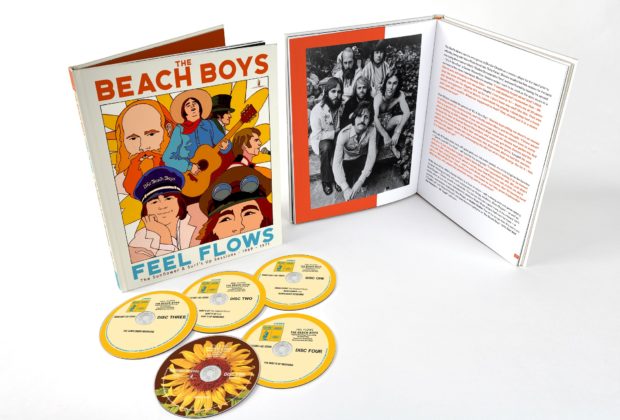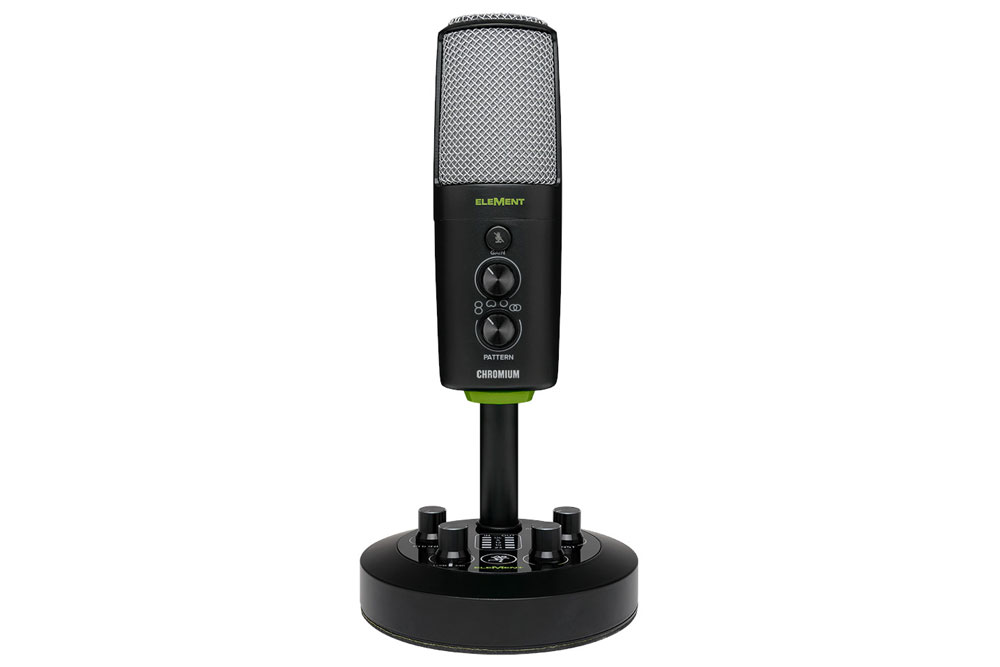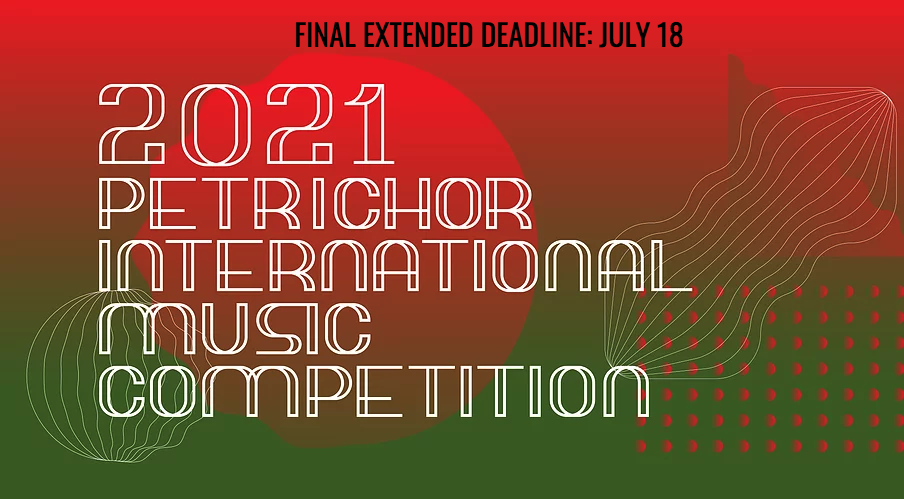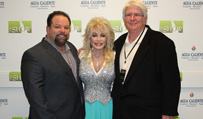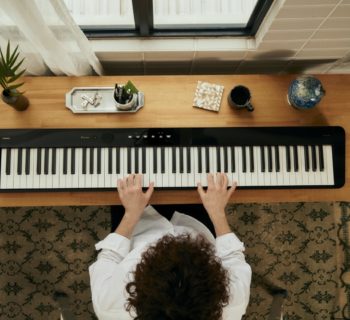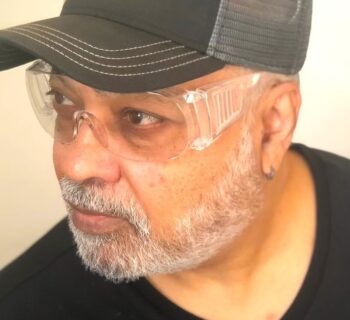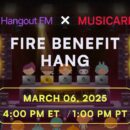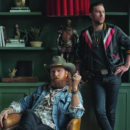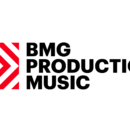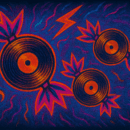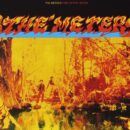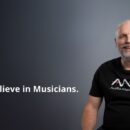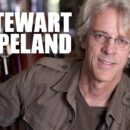In honor of 50 years of The Beach Boys’ timeless and often underappreciated albums, Capitol/UMe will release an expansive 5CD and digital box set titled Feel Flows – The Sunflower and Surf’s Up Sessions 1969-1971 on August 27 that chronicles and explores in depth this metamorphic and highly influential 1969-1971 period of the band’s legendary career.
Assembled by Mark Linett and Alan Boyd, the team behind 2013’s GRAMMY Award-winning SMiLE Sessions, the expansive collection features newly remastered versions of Sunflower and Surf’s Up and boasts 135 tracks, including 108 previously unreleased tracks, live recordings, radio promos, alternate versions, alternate mixes, isolated backing tracks and a cappella versions, culled from the album sessions.
Housed in a book style package, the set is rounded out with a 48-page book loaded with unreleased and rare photos, lyric sheets, tape box images, recording artifacts, insightful new liner notes by noted radio veteran and Beach Boys aficionado Howie Edelson, and new and archival interviews from Al Jardine, Brian Wilson, Bruce Johnston, Carl Wilson, Dennis Wilson, Mike Love, and others. Feel Flows will also be released in abbreviated versions including 4LP on both black vinyl and limited edition Translucent Blue and Translucent Gold color vinyl, 2LP black vinyl and 2CD editions.
Feel Flows is heralded today with the streaming debut of the unreleased gem, “Big Sur.” A beautiful sonic love letter to the central California coastal town of Big Sur, the lilting, pastoral folk tune that was originally recorded for Surf’s Up and has remained unreleased for more than five decades.
I’ve known Brian Wilson for 50 years. He supplied the endorsement testimonial on the back cover jacket of my debut book, This Is Rebel Music in 2004.
During April 2007, I had a couple of very lucid lunch hour interviews with Brian in a delicatessen in the Los Angeles area and visited his home.
Portions of our chats were implemented in Wilson’s 2007 Pet Sounds 40th anniversary tour program. I wrote the notes. In one of the 2007 dialogues we discussed many of the recordings that are housed in Feel Flows – The Sunflower and Surf’s Up Sessions 1969-1971.
In 1962 I first saw the Beach Boys in Culver City, California and met Brian and his then wife Marilyn in West Hollywood in 1965 at Fisher’s Hamburgers.
In 1974 I reviewed The Beach Boys Endless Summer LP for The Los Angeles Times.
During a 1977 Melody Maker interview I conducted with Brian in Santa Monica, California, I asked him then about the Beach Boys’ career longevity.
“We’re still happening. New people are picking up on us all the time. I don’t really analyze why we’re successful. I’m sure the Beach Boys are viewed as an institution, but the main reason for our popularity has to be the songs.”
Q: I saw Elton John play at Doug Weston’s Troubadour in the seventies. Leon Russell and Danny Hutton (of Three Dog Night) caught him at the venue. After the show Danny arranged for Elton to meet you during the engagement. Three Dog Night had covered a couple of Elton and Bernie Taupin’s songs.
A: Yes. Danny Hutton brought Elton up to my house in Bel-Air in 1970. Three Dog Night earlier did “Your Song,” still my favorite of Elton’s, and Elton had just played the Troubadour. I heard he was nervous to meet me when they rang the intercom system. I was nervous to see him! So I answered the buzzer and sang “It’s a little bit funny” to them before they came up. And at Elton’s 60th party I sang a verse of “Your Song” to him. I love Elton and Billy Joel, too. Billy is my favorite piano player. He plays up and down and all around!
Q: In November 2004 you were inducted into the Hollywood Bowl Hall of Fame along with violinist Sarah Chang and composer/conductor and arranger Henry Mancini.
Hank really liked your work. And he dug Cream and the Beatles, too. I sat with him and his son Chris at a Bob Dylan 1974 concert at the Fabulous Forum. Around 20 years ago we saw Andre Previn together at UCLA’s Royce Hall.
I remember saying to Henry at the time that “I hope one day Brian Wilson will do a solo concert at Royce Hall so I could walk to the gig and no parking hassles.” And you and your band just pulled it off! But in 1963 the Beach Boys played the Hollywood Bowl.
A: In 1963 we first went there. The Honeys were also on the bill with us. I don’t remember how long a set we did but it was a pretty big set. I had never been there before that. And I later played the Hollywood Bowl in 2000 and 2006. The Hollywood Bowl reminds me of a huge ear that acts like a speaker! It acts like a speaker the way it’s structured. The sound comes off the stage through a gigantic speaker. That’s physics. I swear to God. That’s how I look at that damn thing. It was special being in the Hollywood Bowl ceremony because it’s my hometown.
Q: In late 1965 at RCA studios in Hollywood you first met Andrew Loog Oldham when he was producing a session with the Rolling Stones. On that day you told Andrew that “you would one day write songs that people would pray to.”
A: Yes I did.
Q: I think “This Whole World” has a spiritual aspect to it. I played “This Whole World” on headphones recently. It really helped me remove toxic people from my orbit and further appreciate life on earth. You even mention gospel in the lyric. There’s also an ARP synthesizer and all sorts of bitchin’ production going down with engineer Stephen Desper. But, Brian, the recording is only two minutes and twenty seconds! It has to be played twice on my cassette tape. Then I hear more things in the mix!
A: Harvey, a song is never finished…I think my music has helped people a little bit. I think it is therapy for people. Music therapy. I think Marvin Gaye’s music is very therapeutic. I think Diana Ross’ music is very therapeutic, to name just a couple.
Q: But it’s therapeutic for you, too.
A: Very much so.
Q: Even when you first started writing songs, was it therapeutic?
A: Well sure, Harvey. Of course. Nothing as good as “Be My Baby.” We couldn’t produce records with that big sound. We had good engineers and good players. The Wrecking Crew. I had Phil Spector’s players.
Q: And around 1969, 1970, ’71, you also utilized drummer and percussionist Dennis Dragon.
A: Yes. I gave him a couple of drum jobs.
Q: Actually you gave him three gigs.
A: Name them!
Q: “Disney Girls (1957),” the drum solo on “Suzie Cincinnati” and “It’s About Time.” He’s the percussionist and Earl Palmer is the drummer on the session.
A: Right. Exactly! How do you know that?
Q: Dude, you’re talking to Harvey. Guess I earned another slice of raisin bread! I don’t need to go on the internet like a Wikipedia child or examine Local 47 Musician Union session logs. I was there.
A: This is deep trivia for me! And Earl Palmer played on some Spector stuff. I know “You’ve Lost That Loving Feelin’” was Hal Blaine. Hal played on most of my records and Earl on one of them.
Q: On Surf's Up I love ‘“Til I Die.” Where the heck did that come from? Deep in the groove count like Sandy Koufax hurling a fastball or curve pitch. I think it’s your most vulnerable lead vocal ever recorded.
A: Well, I put a b note in g major 7th chord and it was a 3rd in the chord, and the note in the key of g resonates pretty well. Lyrically, I tried to put nature in there. Earth, water, rocks and leaves.
Q: I like “Forever.”
A: Oh God. Well, I helped Dennis (Wilson) with the arrangement and he wrote the song. A tearjerker…Dennis is an underrated music person.
Q: “Surf’s Up.”
A: Van Dyke and I wrote that at my house. It was about 11:00 in the morning, and we had a sand box with a piano in it and it took us 30 minutes to write it. 30 minutes! We just wrote it really spontaneously.
Q: “Feels Flows.”
A: That was Carl singing. Charles Lloyd is on it.
Q: “Sail On Sailor.” Carl produced the recording and Blondie Chaplin’s vocal performance is stellar. I know Van Dyke Parks lobbied for the song originally to be recorded.
A: I was at Danny Hutton’s one time. Tandyn Almer and I wrote a song, “Sail On Sailor” it on a Wurlitzer electric piano and Ray Kennedy was there and started writing some lyrics. “Ray, I didn’t know you could write lyrics.” “Keep playing! Keep Playing!” We wrote the thing in about an hour and a half or two hours. Later, Van Dyke Parks tweaked it a little bit. (Jack Rieley added some lyric revision as well).
Q: “Cool, Cool Water.”
A: Well there is something special. The recording session was brilliant. Mike was absolutely brilliant. He was right on.
Q: “Don’t Go Near The Water.”
A: Totally Alan’s trip. I was not part of that. Same with “California Saga.”
Q: Did the principal guitar lead played through a Leslie speaker on “Marcella” get influenced from George Harrison’s lead guitar part on “Let It Be?”
A: Absolutely. Absolutely. Marcella was a Spanish chick that worked at a local massage parlor. On stage now Jeff Foskett and Scott Bennett turn it loose into a jam session.
Q: In 1971 I saw the Beach Boys one night with Flame opening, and the next night the Bee Gees at the same venue, the Santa Monica Civic Auditorium.
A: The reason I love the Bee Gees is because of their harmonies.
Q: Barney Kessel was married to the legendary vocal contractor, B.J. Baker, who is heard on Frank Sinatra’s “That’s Life.” And, B.J. also sings on “Got To Know The Woman,” a Dennis Wilson song from your Beach Boys’ Sunflower album.
I recall talking with you and Rodney Bingenheimer years ago about Pet Sounds. We wanted a show of just that album and a mono sound system or analog playback to the audience. . My mind was blown when you mentioned that you originally recorded the instrumental Pet Sounds for a James Bond movie, Dr. No.
A: It got turned down, Harvey. They turned it down! They turned the damn thing down. It got submitted. If you can do the twist then “Pet Sounds” got turned down. “We don’t have any interest in that song.” I’m gonna put it on Pet Sounds. That’s why it went on Pet Sounds. The James Bond people turned it down. And, when we play the “Pet Sounds” instrumental on stage now I turn around and face my band and take the piece in.
Q: This reminds me of the days we would sit around play 45RPM records and sing along with them. Before I leave the Pet Sounds section of this conversation, every night you and the band perform “God Only Knows” and the song always garners a standing ovation from everyone in the crowd. Why?
A: Because we’ve had a little practice, Harvey. (laughs) Second of all, Carl (Wilson) is gone, and third of all, I have to carry what he used to carry. I have to carry the damn weight. I have to carry the ball. I don’t remember the recording session of it. Too far in the past to remember. I mean, here is your part…O.K. Here is your part…O.K. And, somehow, we got “God Only Knows” done. And, the record spoke for itself. And it was a religious experience. Carl and I were into prayer. We held prayer sessions in our house on Laurel Way. “Dear God. Please let us bring music to people.” It happened. A cool trip. A lot of people say to me that Pet Sounds got them through high school or college.
Q: “Wouldn’t It Be Nice” from Pet Sounds. Barney Kessel’s guitar introduction on the track is just terrific.
A: Barney did the introduction to the song and Glen Campbell was also there. And, I said to myself, “I’m going to have these guys play directly into the board instead of going out into the studio.” And they plugged their instruments into the recording console direct. That’s how we got that sound. I also did that on “California Girls.” My brother Carl played a 12-string on that and we plugged him into the console and he did his thing. Every now and then I’ll do that.
Q: “Caroline, No” is your favorite song on “Pet Sounds” and the prettiest ballad you’ve ever sung. The recording was pushed up a beat.
A: And guess whose idea that was?
Q: Your father Murry Wilson.
A: Yes. He said to speed it up a half a note and you’ll have a real special song. I did it and it worked. What can I say?
Q: “Break Away” is in my top ten Beach Boys’ records. The co-writer on the song is Reggie Dunbar, a pseudonym for your father Murry Wilson, who did write songs himself.
A: My dad and I wrote it. He didn’t want anyone to know that he wrote it with me. Believe it or not, we wrote some of it on my doorstep outside my house and some sitting around at the piano. Sure, I was still friends with my dad after he didn’t work with us anymore. He was a good buddy. It was done at Sunset Sound Recorders, which was just as good as Western.
Q: What about teaming with lyricist Tony Asher for Pet Sounds?
A: A cool kind of guy. A little more soft spoken. His attitude is just right for creativity and just right to work with. I might call him up as a matter of fact. That might be a good bet for me. Just before we began collaborating on Pet Sounds I asked him what it was like writing commercials for an advertising company. It seemed like interesting work. I said, “You should be good with words if you can do that.” And, he said, “I’m pretty good with words.” Out of nowhere I said “Would you like to work with me on some songs and write some lyrics?” “I’ll give it a try.” Then, Pet Sounds, like that. 1966 was a very big year for the Beach Boys.
Q: Can you describe collaborating with Van Dyke Parks?
A: Working with him is not easy at all because he is a perfectionist. So he wants it his way and the right way. So, I go, “Yes, Van Dyke.” He’s say, “OK, but that’s not what I had in mind.” “OK.” I never argue about things. I’ve always liked what he’s come up with. That’s the thing. Always. I’d never say that sucked ‘cause that would hurt his feelings. He’s a gentleman and a scholar. A very bright person.
Q: In 1977 you told me “I don’t carry a notebook or use a tape player. I like to tell a story in the songs with as few words as possible. I sort of tend to write what I’ve been through and look inside myself. Some of the songs are messages.”
You’ve written a lot of songs with various co-writers and lyricists and there are songs which are just your words and music. Is the process different from a collaboration. Think of “Surfer Girl,” “The Little Girl I Once Knew,” “Girl Don’t Tell Me,” ”I’m Bugged At My Ol’ Man,” “Passing By,” “Busy Doin’ Nothin’,” “Our Prayer,” “Love & Mercy,” “This Whole World,” and “Til I Die.”
A: I get that feeling when something tells me it’s never gonna end. So, it never ends. What do I do? I go to sleep. A song is never finished…
Q: Do the titles of songs come first?
A: Titles usually come after the lyrics are done.
Q: I think it was Nik Venet, our wonderful friend, who told me, I know he signed the Beach Boys to Capitol Records and produced your early LP’s, that around 1958, you went to see the Four Freshmen at a show.
A: I was 14 years old. It was at the Coconut Grove (at the Ambassador Hotel) in Los Angeles, and I was shaking. I was so scared to meet them after seeing the show. And my dad said, “Hi. I’m Murry Wilson. This is my son Brian.” I was so afraid. I was a big time fan and shaking so hard I could hardly talk. It was my first live music. They could reproduce their album sound on stage. Absolutely. The high singer, Bob Flanagan, came to our Hawthorne landmark event a few years ago.
Q: I used to see you around town at Gold Star Recording Studio, United Western, and even Sunset Sound when I was a kid. I know your early albums for Capitol Records were done at the Capitol studios on the premises. But I never believed that you split the scene from doing the Beach Boys albums from Capitol to other studios because you wanted to be away from under the watch of the record label located in the same building. Was there a reason?
A: I didn’t like recording there and not because it was too close to the label. I liked the Capitol rooms, and I liked the instrumental sound, but I didn’t like the vocal sound. I didn’t like that kind of echo chamber. Tell me I’m an idiot! I just didn’t like the vocal sound, so we switched over to Western, and Gold Star. Western had a big room, and Phil Spector was over at Gold Star.
Let me tell you a story. I went to Gold Star and asked Larry Levine, the engineer, “What is the secret of the Phil Spector echo trip?” “Well, we have two echo chambers under the parking lot. Phil uses both the chambers at the same time.” So I tried that myself and it worked.
Q: Paul McCartney told how much he liked the bass lines on Pet Sounds. I know you utilized the bass as a principal instrument. Like on “Here Today” you conceived the idea of the bass playing an octave higher on the rhythm bed track.
A: Because the bass parts resound better in a studio and you can take three hours to get one line if you really needed it. You could take forever and get a goddamn line, you know?
Q: When did you start utilizing two bass players on the same music track, like on Pet Sounds?
A: I asked Larry Levine what Phil Spector did with his basses and Larry said Phil uses a standup and a Fender both at the same time. And the Fender guy used a pick. So I tried it out at my session and it worked great! You also get a thicker sound putting the two basses together. I start with drums, bass, guitar and keyboards. Then we overdub the horns and the background voices.
Q: You covered many Phil Spector records including “Then I Kissed Her.” A: The opening riff is my favorite riff ever written. And on the record I wanted to feature Al and give him a chance to stand up and sing. It’s hard to describe Al’s vocals, but he can go up there and get pretty high.
Q: “Please Let Me Wonder.” The stereo mix makes it a bit more cinematic. It’s a song is about opportunity and destination. Tell me about the recording session.
A: That was cut at 4:30 in the morning. I went to the studio in the middle of the night. I called my engineer, Chuck Britz, at Western, so my wife and I went to the studio. We were there 5-8 a.m. One of my favorite recording sessions I ever had in my life.
Q: “Let Him Run Wild.” I know you never liked your super high lead vocal on it. At my pad it’s a head-turning beat heat record. I’m flashing on the vocal part on the third verse.
A: I was just a little too effeminate on it. If I played it right at this moment with my wife or friends are around I just push the stop button.
Q: “The Little Girl I Once Knew.” I know as a teenager Rodney Bingenheimer attended this recording session.
A: Yes he did. That is my very favorite introduction in a song in my whole life. It kills me every time.
Q: Because of the way the music is suspended on the front end of the track?
A: Yes. Yes. It might have been the first time the music stopped and started again on a record. I wrote the intro at the studio before we cut the thing. And, (session musician) Larry Knechtel, it was his idea to keep the music rolling. And we tried one, and then I put a second guitar overdub on top of the other guitar. And the rest of it was history. We were doing stereo but I could only hear the mono and I always put the vocals up front in the mix. Mixing in mono is good for my left ear. My right ear is broke, done and over with.
Q: I recall years ago during some Capitol Studios mastering sessions you always had to lean close to one speaker during the tape transfer since you had reduced hearing in one ear and would position your head right next to the just one speaker. The engineers were amazed by you discovering some high end and bass frequencies on playback. I really dig the “Wendy” record.
A: It was not written about my daughter Wendy. This was way before she was born. You know it starts with a bass slowed down with a guitar. It was an attempt to flatter the Four Seasons. I wanted to try and imitate the Four Seasons in a way they would like to hear it. ‘Cause I like (producer) Bob Crewe and the way they do their vocals.
Q: “The Warmth of the Sun” is wonderful.
A: Probably Mike Love’s most beautiful lyrics he’s ever written and one of the prettiest songs I ever wrote. I think it’s because JFK had died the day before. We dedicated it to him and I tried to sing it sweetly and angelically, you know, trying to capture the sound of a sweet angel.
Q: Do you remember the first day you went into Capitol Records in 1962?
A: Yes. I remember walking into the building with my father and Gary Usher. We met the A&R man, Nik Venet. And he listened to our demos and he signed us right on the spot. We played him “409” and “Surfin’ Safari.” “I want to sign you guys right now.” I just wanted to make records. I didn’t know how big it would get. I didn’t think it would.
Q: And look what it became for all of us on the planet. Thank you for the music.
A: Thank you for opening a can of worms I’ve forgot about. (laughs).
Brian Wilson with Al Jardine plus Blondie Chaplin are confirmed for a show at the Long Beach Terrace Theatre in Long Beach, California on August 29, 2021.
This summer Beach Boys’ co-founder Mike Love continues to lead the Feel Flows World Tour along with longtime member Bruce Johnston.
Harvey Kubernik is the author of 20 books, including Canyon Of Dreams: The Magic And The Music Of Laurel Canyon and Turn Up The Radio! Rock, Pop and Roll In Los Angeles 1956-1972.
Sterling/Barnes and Noble in 2018 published Harvey and Kenneth Kubernik’s The Story Of The Band: From Big Pink To The Last Waltz. For October 2021 the duo has written a multi-narrative volume on Jimi Hendrix: Voodoo Child for the publisher.
Otherworld Cottage Industries in 2020 published Harvey’s book, Docs That Rock, Music That Matters, featuring interviews with D.A. Pennebaker, Chris Hegedus, Albert Maysles, Murray Lerner, Morgan Neville, Curtis Hanson, Michael Lindsay-Hogg, Andrew Loog Oldham, Eddie Kramer, Dick Clark, Ray Manzarek, John Densmore, Robby Krieger, Christopher M. Allport, Travis Pike, Allan Arkush, and David Leaf, among others.
Kubernik’s writings are in book anthologies, most notably The Rolling Stone Book Of The Beats and Drinking With Bukowski.
Harvey wrote the liner note booklets to the CD re-releases of Carole King’s Tapestry, Allen Ginsberg’s Kaddish, Elvis Presley The ’68 Comeback Special and the Ramones’ End of the Century. Kubernik penned the liner notes to the November 2021 National Record Store Day Drops Lou Adler-produced release, A Combination of the Two, by Big Brother & the Holding Company featuring Janis Joplin culled from the 1967 Monterey International Pop Festival. Harvey is writing and assembling a manuscript Sisters In Song.
During 2020 Harvey Kubernik served as a Consultant on the 2-part documentary television series Laurel Canyon: A Place in Time directed by Alison Ellwood that premiered on EPIX television channel in 2020.
Harvey is working on a documentary about Rock and Roll Hall of Fame member singer/songwriter Del Shannon. Kubernik was filmed for a documentary in production about Gold Star Recording Studio. Brian Wilson, Herb Alpert, Darlene Love, Mike Curb, Chris Montez, Bill Medley, Hal Blaine, Slim Jim Phantom, Shel Talmy, Don Peake, Johnny Echols, Gloria Jones, Carol Kaye, Marky Ramone, David Kessel and Steven Van Zandt have been lensed.

